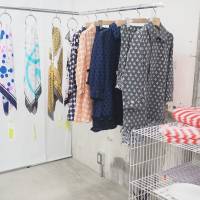Fashion Leapt Forward in 2016: What’s Next?
As someone who loves fashion, but hates many parts of the industry itself, it is almost an assumption that I will be disappointed by the lack of diversity within the field. I am an Indian-American woman and I’ve never expected to see anyone who looks like me modeling, or, more importantly, creating the clothes and trends I so lovingly dote on.
I grew up watching white designers, magazine editors, and bloggers making clothes or trends for predominantly white, tall, and skinny girls. I grew up not expecting to see someone like me because the past had never given me a reason to, and I am quite sure other minority women have felt the same way at some point, whether that minority represents an ethnicity or a body shape.
For these reasons, the past two years were initially unreal to me. I saw Kickstarter campaigns used to start fashion magazines geared toward black women. For the first time, I saw models of color being used as actual models instead of as a means to the end of fulfilling some quota. For the first time I saw an overwhelming number of women with different body shapes being represented on the runway. For the first time I saw what appeared to be real representation.
Qimmah Saafir saw that fashion and beauty lacked the representation of black women. Saafir noticed that even the publications she loved did not have a space for her. She took it upon herself to start a Kickstarter campaign to eventually launch her magazine, devoted to the fashion, beauty, and, most importantly, the voices and stories of black women.
Big-name designers also took a stand last year. Zac Posen, in 2016 New York Fashion Week, cast almost exclusively black models, demonstrating how the groundwork of the industry may be changing. Posen illustrates how women of color are not secondary accessories, but rather forefront inspirations. Moreover, H&M used a diverse set of models for one of their latest campaigns, including a Muslim woman donning a hijab. In 2015, Indian-American jewelry designer Amrita Singh became more prominent than ever before.
These past two years also brought an influx of varying body types to the runway. Designer and model Ashley Graham created a lingerie line for women of all sizes for NYFW, and subsequently had women of all sizes model her sexy, kickass designs. Moreover, Graham became the first plus-size woman to cover the swimsuit edition of Sports Illustrated.
While this has all been great for diversity, it is also important that we don’t get too comfortable. These changes are good and necessary, but the industry needs to continue making huge strides in order to allow for further progress. Change happens slowly—so let’s just make sure that it continues to happen. In 2017, I want to see continuous progress being made, so that eventually it is not huge news that Sports Illustrated’s cover has a nontraditional model on it.
I want to see Zac Posen and other designers show highly representative fashion lines and models, and I want that to be normal. I want women like me to be able to grow up seeing people who represent and look like them or have similar stories, so they know they aren’t alone. I want girls to grow up expecting to see themselves in an influential designer, artist, author, or whatever their heart desires.
Pooja Patel studies neuroscience and philosophy at Barnard College, Columbia University. She does research at a CU neurobiology laboratory, which emphasizes anticipation behaviors, circadian rhythms and biology.
New research confirms that models are being pressured to sacrifice their health for their job. It’s time to prioritize health and celebrate diversity at NYFW. Let’s show the world that diversity is what makes us strong! Click here to add your name to our public petition.




